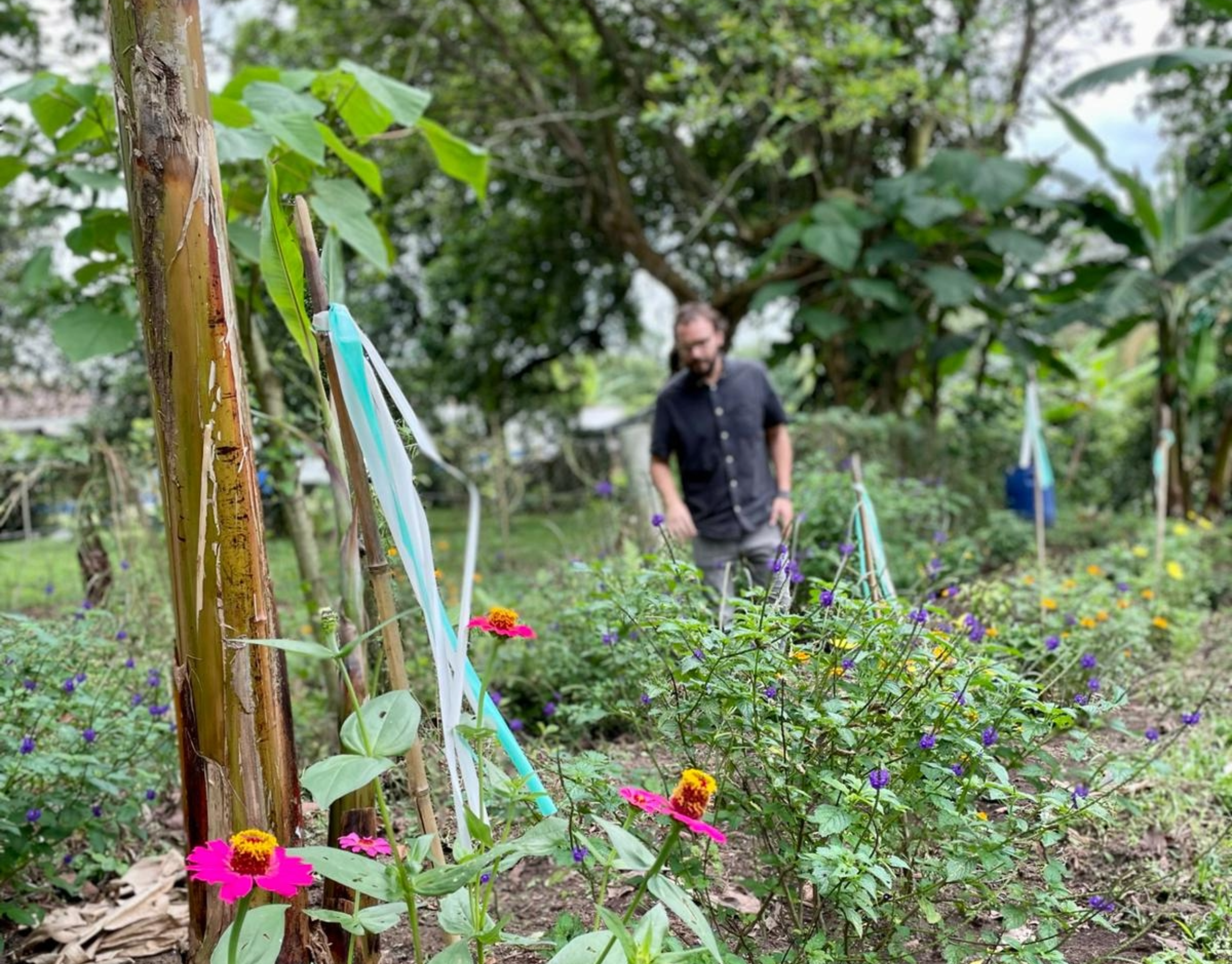It all started with the observation that the landscape of conventional Colombian coffee growing is often synonymous with the destruction of biodiversity.
Senderos
Colombia - Genova - Quindio - SENDEROS - EP - Fully washed
Pick your crop :
Aromatic notes:
Spot price
€/kg
Discover the SENDEROS project
The SENDEROS coffee comes from the village of Génova, in the Quindio region.
"SENDEROS", which means paths, tracks, illustrates the different path and the bias in the production of this coffee. It all started with the observation that the landscape of conventional Colombian coffee growing is often synonymous with the destruction of biodiversity. Quindio, which is one of the cradles of coffee in Colombia, has massively transformed its landscapes over the last few decades to produce more. The result? More than 1500 bee colonies have disappeared.
22 farms have joined forces with a group of botanical and biological researchers to remedy this situation.
Objective:
To recreate natural habitats for wild pollinators (bees, wasps, butterflies, ladybirds, flies...).
How can this be done?
1. By creating flower corridors in plantations
2. By implementing a ZERO pesticide policy
3. By training growers on biodiversity, pollination, shade trees, organic fertilisers...
4. By establishing nurseries to grow flowering plants and shade trees
5. By analysing the impact of these flower corridors on the increase of biodiversity in the medium and long term.
Marketing tools & Certifications
POS displays, postcards, QR codes for packaging, ...
Terroir Genova
Genova is a village located in the region of Quindio. As the most traditional and ancient coffee region, Quindio has been one of the most important departments and sources of development of coffee culture in Colombia. Its towns are one of the most touristy and visited places in Colombia and coffee is the main attraction for visitors. In fact, the coffee culture, which has developed for decades in the region, was the main factor for the recognition by UNESCO of the Coffee Cultural Landscape (CCL), which means that the landscape and its culture should be protected as cultural heritage of humanity. It is not only about coffee, the elements of this culture are related to traditional cars, typical food and the beautiful structure and colours of the houses in the coffee towns and farms.
Average temperatures range from 16 to 22°C. The municipality, like the rest of the Department, benefits from its position within the Andean region due to its diverse thermal floors, which provide significant opportunities for agricultural production diversification and overall land use. Its strategic location can be seen as a development hub, leveraging its potential in water resources, biological diversity, soil quality, economic factors, and cultural assets. In Génova, there are approximately 774 coffee-producing families who cultivate their coffee at elevations ranging from 1,500 to 1,900 meters above sea level, in a loamy-clay soil type.

Meet Sudus
A few words about Sudus
SUDUS is a specialty coffee company based in Armenia, Quindío, Colombia. Focused on sustainable farming and pesticide-free production, SUDUS promotes ecological projects like Polinizadores, which create floral corridors to restore biodiversity and improve ecosystem health on coffee farms. Its network of partner growers is rewarded for environmental services, while producing high-quality washed and natural coffees that reflect both sustainability and sensory excellence.

Project Flower Corridors - Colombia
Biodiversity for a better coffee
Belco, Sudus Coffee and Delonghi have made a commitment to sustainability by developing the “Flower Corridors” project.
This initiative by Sudus, together with a team of botanists, biologists and entomologists, involves planting corridors of flowers and shade trees on the Quindío farms selected for the project.
Nurseries for flowering plants and shade trees will be built, and training will be provided on the impact and benefits of biodiversity and shade in coffee growing.
Equipments selection
Unit price
€ ex.tax/U
From xx products
€ ex.tax/U
Unit price
€ ex.tax/U
From xx products
€ ex.tax/U
Unit price
€ ex.tax/U
From xx products
€ ex.tax/U
Unit price
€ ex.tax/U
From xx products
€ ex.tax/U
Unit price
€ ex.tax/U
From xx products
€ ex.tax/U
Unit price
€ ex.tax/U
From xx products
€ ex.tax/U
Unit price
€ ex.tax/U
From xx products
€ ex.tax/U

